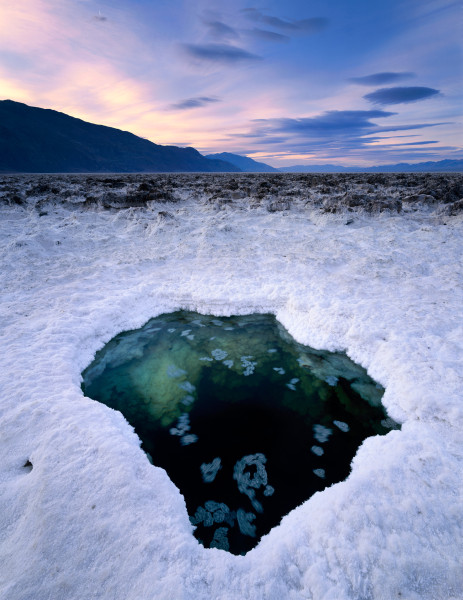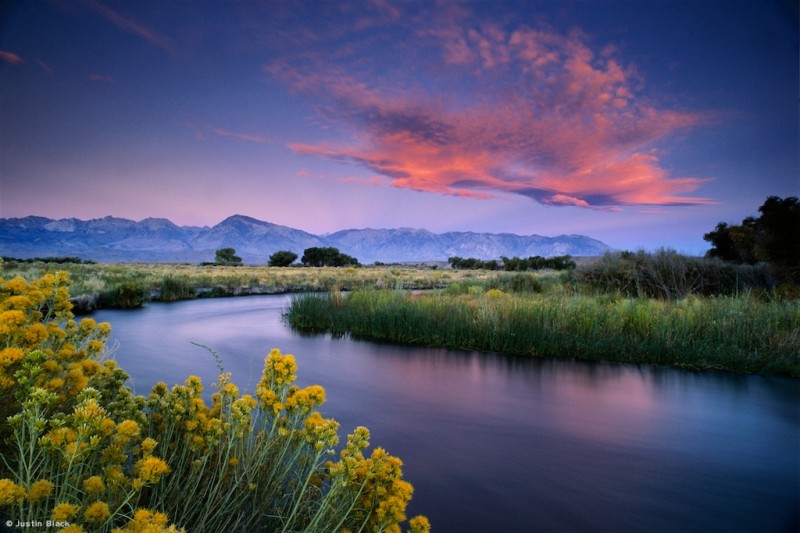What does it mean to be a photographer with purpose? The challenge of making that next image to be proud of, not to mention the warm glow of accomplishment that follows, can be meaningful enough for a lifetime of photography. After a while, however, some passionate photographers start to wonder about the point of producing and accumulating images, and they begin to crave purpose in their work.
As a boy, I just liked the view through my father’s camera. Investigating the world through the viewfinder frame encouraged a greater appreciation of the things that interested me. As I began to learn about photography, it was the moods and emotions that photographs can evoke through tonality and contrast that most excited me, and I spent hours at a wobbly enlarger in my school’s darkroom trying to make prints that yielded the rich qualities of tone that I saw in the work of 20th century masters. Early in my career, I found myself photographing mostly to serve the needs of the market, and began to realize that I was still trying to find my own “voice” and deeper meaning and purpose for my work.
Three years working with Galen Rowell changed all that. Overflowing with purpose, Galen seemed to anticipate an application and audience for every image. Even making very personal photographs, he always had in mind that this image would illustrate a point in a lecture; that image would help advance the agenda of a conservation campaign; yet another would make a perfect cover for Outdoor Photographer. By keeping a mental list of ongoing thematic projects and potential applications for images, he had a ready source of conceptual and creative inspiration. The purposes he kept in mind helped him to routinely seek out and make photographs that had a point and carried a message, rather than simply being pretty. As I adopted this approach, I found that my personal work became stronger and far more satisfying to create.
Pros have obvious business motives for keeping purpose in mind as they work, but it also keeps the creative juices flowing by setting goals that force them to push limits and tackle challenges that they might not otherwise engage on their own. Amateur photographers can create a similar artist-client scenario by taking on projects on behalf of causes they wish to support, such as a local conservation organization. Of course, anyone can create their own set of goals for a body of work, and the amateur has the luxury of serving personal interests alone, rather than the whims of a particular client or market.
Start with your passions. If you have trouble defining specific subjects or themes that you are truly passionate about, make a list of the sorts of things you tend to be drawn to photographing. Then, take a moment to honestly reflect on why you are drawn to each one. Perhaps some will appeal to you because you saw another photographer’s great photos of that subject and you’d like to make comparable images. Sufficient motivation though it is, to find a truly meaningful purpose you may want to dig deeper to find your own voice. A few of the subjects on your list will ultimately reveal a more personal calling that transcends photography – things you are absolutely fascinated with and care about deeply, regardless of whether you’ve seen good photographs of them or not.
Next, pick apart each candidate subject, thinking of ways to capture images that follow a theme and tell a story. You might want to make a storyboard, sketching rough compositions of opportunities you anticipate might come together for you under reasonably foreseeable conditions. Then, think through each image you’ve previsualized in the storyboard and determine what conditions would need to be present, what preparations you need to make, and how to be in position at the right time to make that image the best it can be.

To photograph this sinkhole in the Death Valley salt pan, I tried to anticipate and plan for the various challenges the situation presented, so I could show up ready to execute the picture. To capture detail beneath the surface, I brought along a friend to light paint with a handheld spotlight while I dodged the sky with a black card for most of the 12 second exposure on 4×5 color transparency film.
For example, for a project on pollination you want to photograph a sphinx moth hovering to feed from a night-blooming cereus. You’ll have to make sure you are in position on the one night each year when the bloom opens, and ready to capture the moment when a moth zooms in. If you want to photograph a leopard seal chasing a penguin, you might plan to wait beside the spot where the penguins like to leap from the water to the ice, and the seal will eventually come to you as the penguin speeds past. When I recently collaborated with my friends Jack Dykinga and Alfredo Medina on assignment to photograph crystal-clear subterranean pools, or cenotes, in the Yucatán for an International League of Conservation Photographers project, we determined that we would need to bring along portable lighting including underwater strobes to do the job right. Thinking through and planning for numerous variables in advance can make a seemingly impossible shot relatively easy to execute.
Assuming that you plan to share your work with others, it’s important to keep the applications and outlets for your images in mind. A photographer creating a body of work specifically intended to be fine art may take a very different approach than they would if the priority is to produce a photojournalistic essay that tells a flowing story from opening shot to conclusion. Will you need to make wall-filling display prints for a gallery show? Have you considered the needs and preferences of an editor to whom you wish to submit your work? Rather than throwing a hodge-podge of favorite images into your online gallery, consider editing sets of images according to theme. Photographing with the specific aim of creating a custom photo book about the birds that migrate through a local wetland, or creating set of prints of square-format black-and-white Tuscan landscapes will help focus how you plan and create your work.
As you pursue your projects, periodically review and critique not just your images, but also your planning and preparation process. Compare your results to what you had hoped to do, and think about ways to apply what you learn from each situation. Constructive critique by experts you respect can be invaluable, as can group critiques with other passionate photographers. Spanning the process from research, planning, execution, and review, a great deal of learning takes place, which is a worthy purpose in itself.
Born from a decade of photo workshop instruction and a career as a photographer advocate, my passion for aiding the advancement of serious photographers led me to establish Visionary Wild, a photo workshops and expeditions company providing mentorship and fieldwork experiences for passionate photographers who seek a high standard of instruction, thorough logistical planning, and an overall experience that exceeds expectations. Our instructors include such luminaries as Jack Dykinga, John Shaw, Annie Griffiths, Jeff Foott, Karen Kasmauski and others selected not as much for their impeccable credentials and notoriety as for their depth of expertise and demonstrated track records as thoughtful, generous, and gregarious teachers. Our programs include insightful, inspiring instruction on bringing purpose to one’s photography, and we even connect our workshop participants directly with exhibitions at important galleries and opportunities to apply their photographs to conservation campaigns and other worthy causes.Regardless of the source of your inspiration, embracing purpose in your photography will lead you to develop personal projects with goals and plans for execution, which in turn will guide the process of creating cohesive bodies of work that reflect your passions, original vision, and creative voice. Whether your aim is to publish your work, mount an exhibition, help save an important ecosystem, or simply post online to share with friends, photographing with purpose leads to tremendous empowerment, growth, meaning, and satisfaction.
